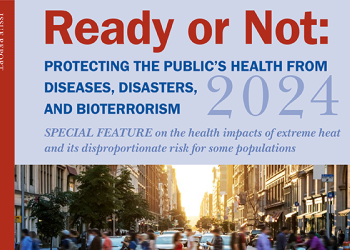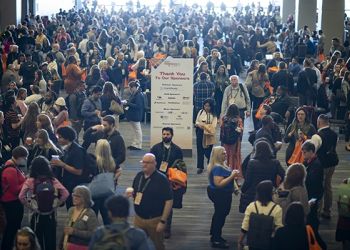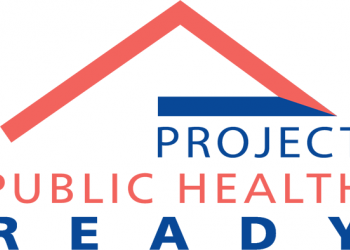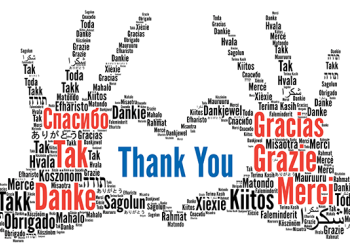In June 2016, NACCHO conducted the second Preparedness Profile assessment to gather information about preparedness trends and emerging issues at local health departments (LHDs). The results from this assessment provide a better understanding of the strengths, gaps, and opportunities in local public health preparedness. Furthermore, its findings inform priorities at the local, state, and national levels, and influence NACCHO’s preparedness activities.
The 2016 Preparedness Profile assessment was distributed online via Qualtrics Survey Software (TM) to a statistically representative sample of 871 preparedness coordinators, stratified by jurisdiction population size. Preparedness coordinators are individuals identified by LHDs as having a significant responsibility for leading or coordinating an LHD’s disaster/emergency preparedness planning and response activities. Large LHDs (population 500,000+) were oversampled, and results were weighted to adjust for both oversampling and non-response.
Preparedness coordinators were asked to respond to 18 closed- and open-ended questions about their LHDs’ preparedness workforce, planning, and activities, including topics regarding current and emerging threats, healthcare coalitions, administrative preparedness and the National Health Security Strategy. A total of 458 preparedness coordinators completed the assessment for a response rate of 53 percent. During the analysis phase, NACCHO took into account the results of this and the 2015 Preparedness Profile assessment results, as well as qualitative information provided by members through NACCHO workgroups and programmatic activities.
Some of the highlights of the results of this assessment include:
- Approximately one third of LHDs reported a decrease in preparedness staff, mainly among larger LHDs. Compared to 2015, 12 percent more LHDs reported staffing decreases.
- Most preparedness coordinators (73%) in large LHDs dedicate all their time to preparedness efforts, while preparedness coordinators in smaller LHDs spend their time working in a variety of public health areas.
- Most LHDs reported excellent partnerships with emergency management services, emergency management agencies, and hospitals. LHDs were least likely to report strong partnerships with pharmacies and local businesses.
- In both 2015 and 2016, the majority of LHDs reported being members of a regional healthcare coalition to plan and implement preparedness activities.
- LHDs most frequently selected terrorism-related events and accidental nuclear/radiation releases as the current threats they feel least prepared to address.
- Extreme weather and infectious diseases are the top global/emerging threats that LHDs are most concerned will affect their community in the future.
- Overall, the broadest range of activities conducted by LHDs in the past year were focused on medical countermeasure, community preparedness, and infectious disease topics. Conversely, LHDs most often report not conducting any preparedness activities in climate change/adaptation, cybersecurity, and counterterrorism and response.
- Approximately half (51%) of LHDs were not aware of the National Health Security Strategy, but this has decreased slightly from 2015.
This annual assessment represents a significant contribution by preparedness coordinators to the knowledge base of the overall state of preparedness personnel, infrastructure, and practice at LHDs. The results should help inform national, state, and local preparedness activities and priorities for the future.
For more information about the assessment results and NACCHO’s specific recommendations, please refer to the final report. If you have any questions, or would like more information, please e-mail [email protected].








